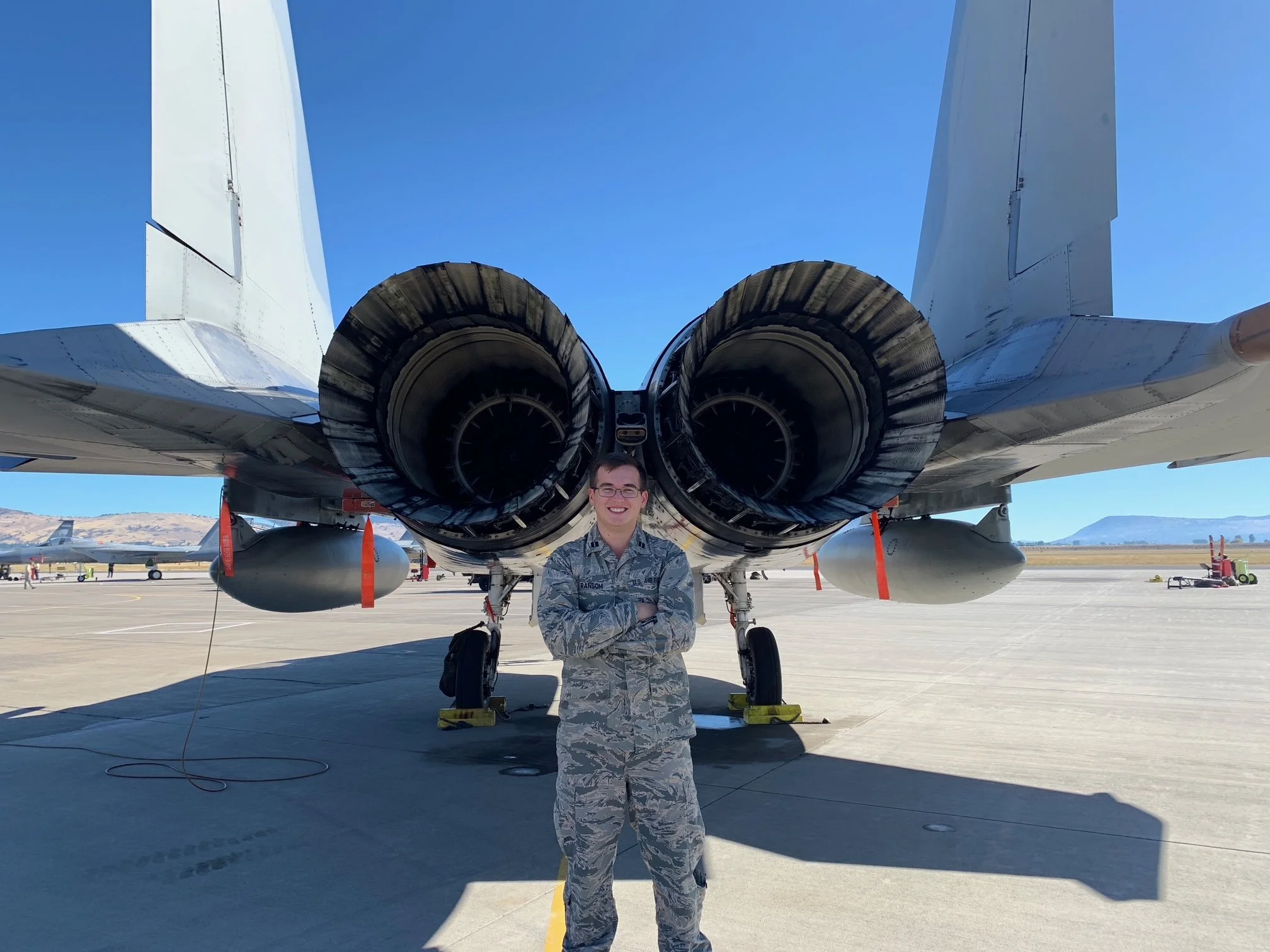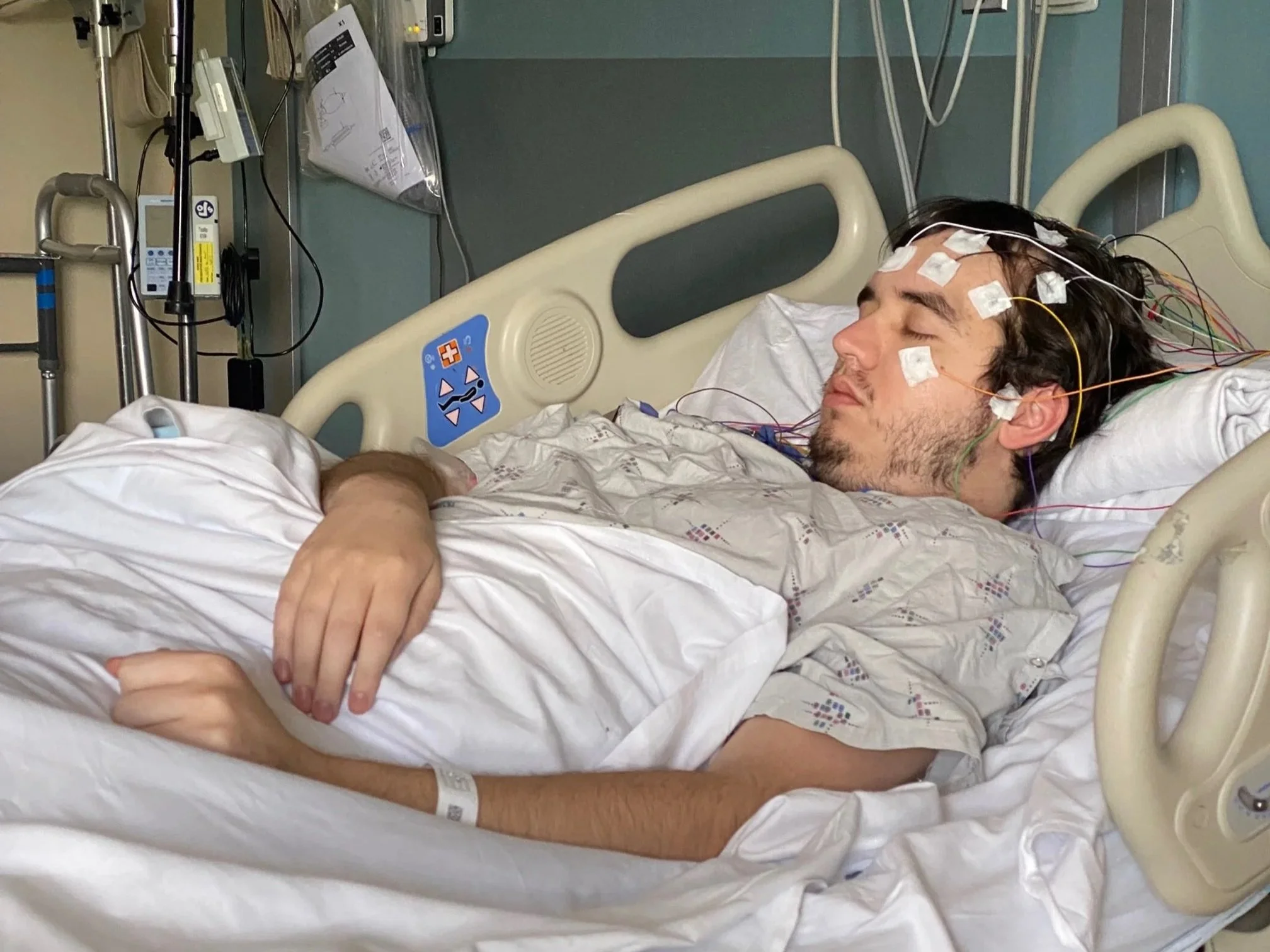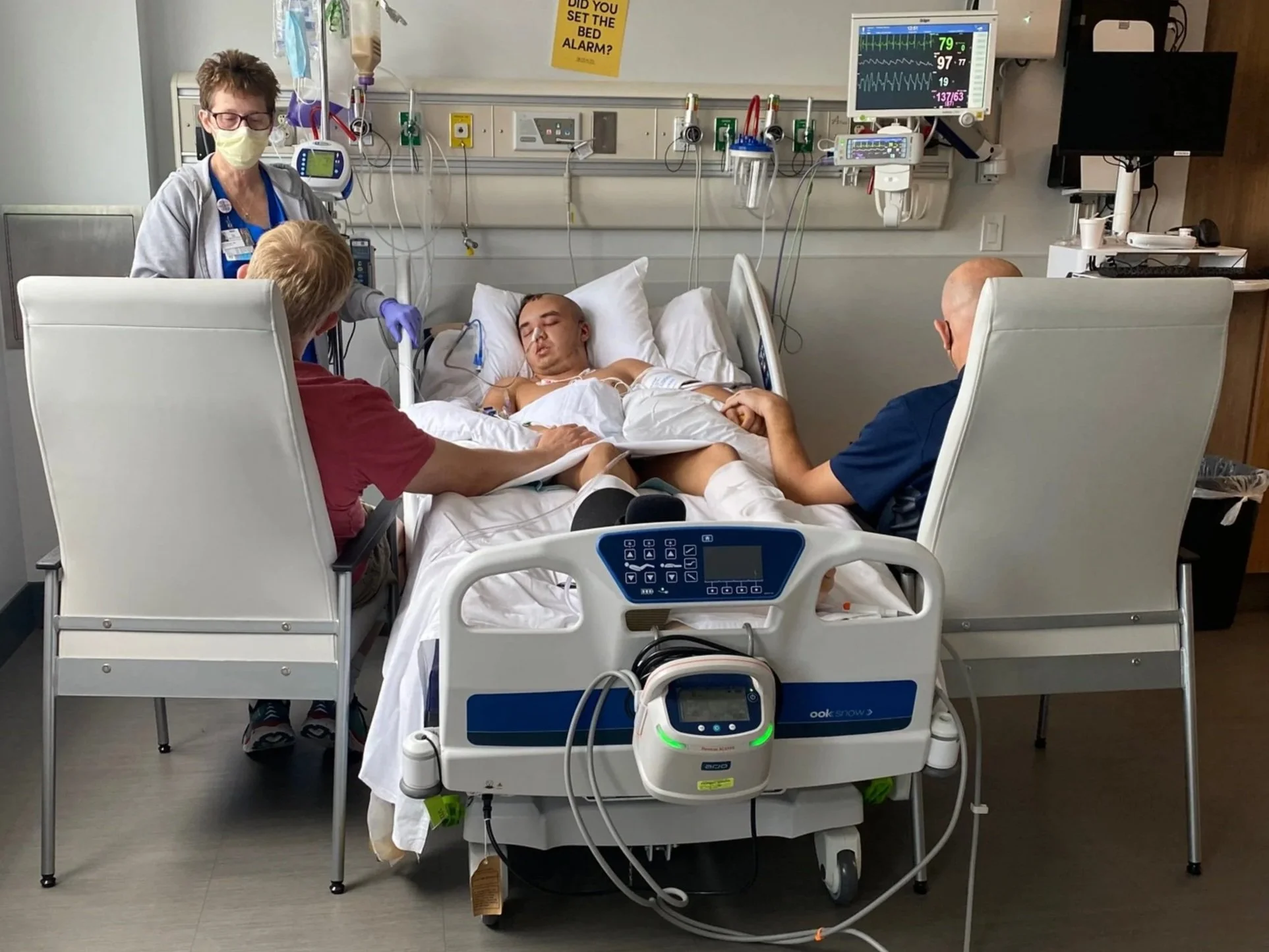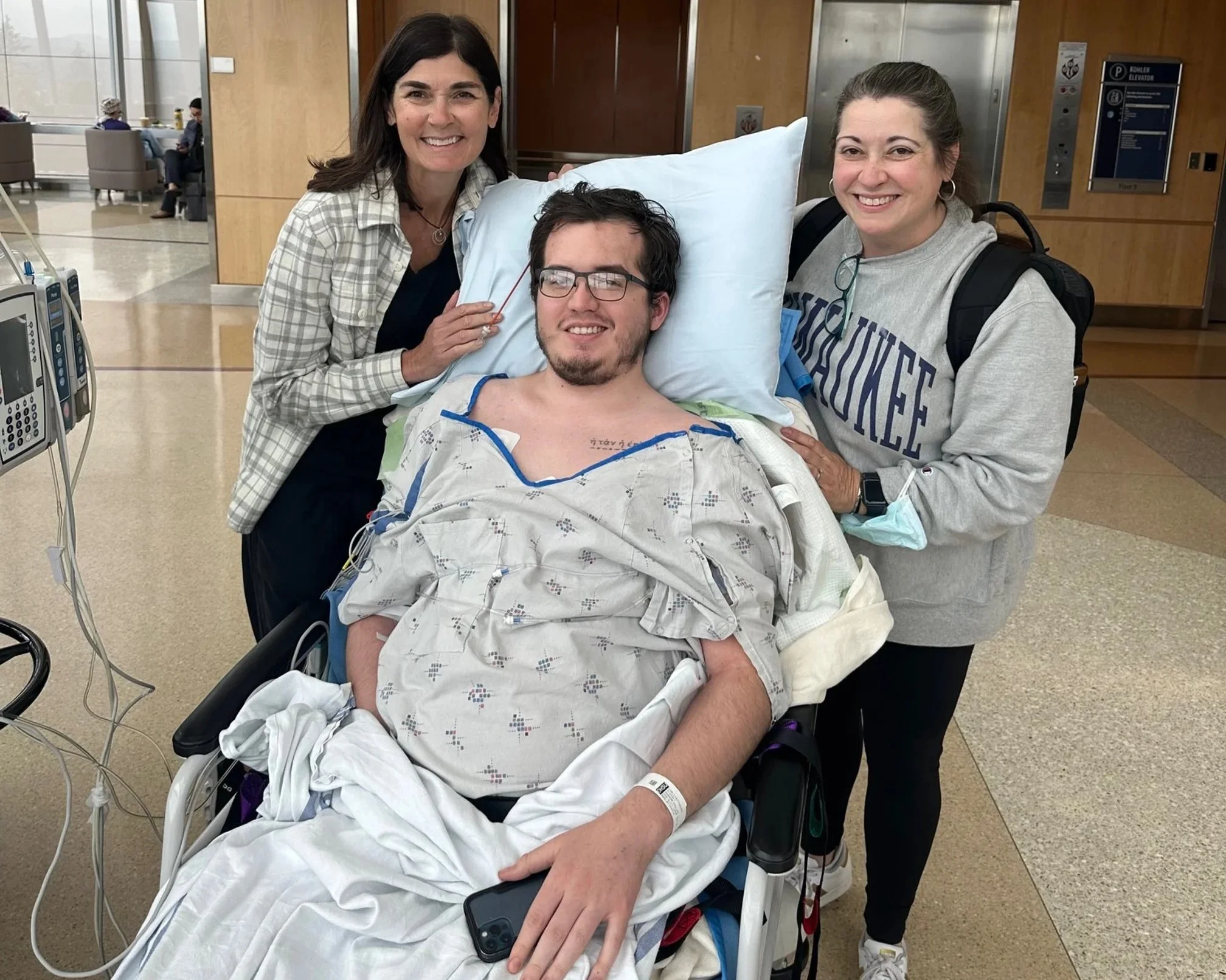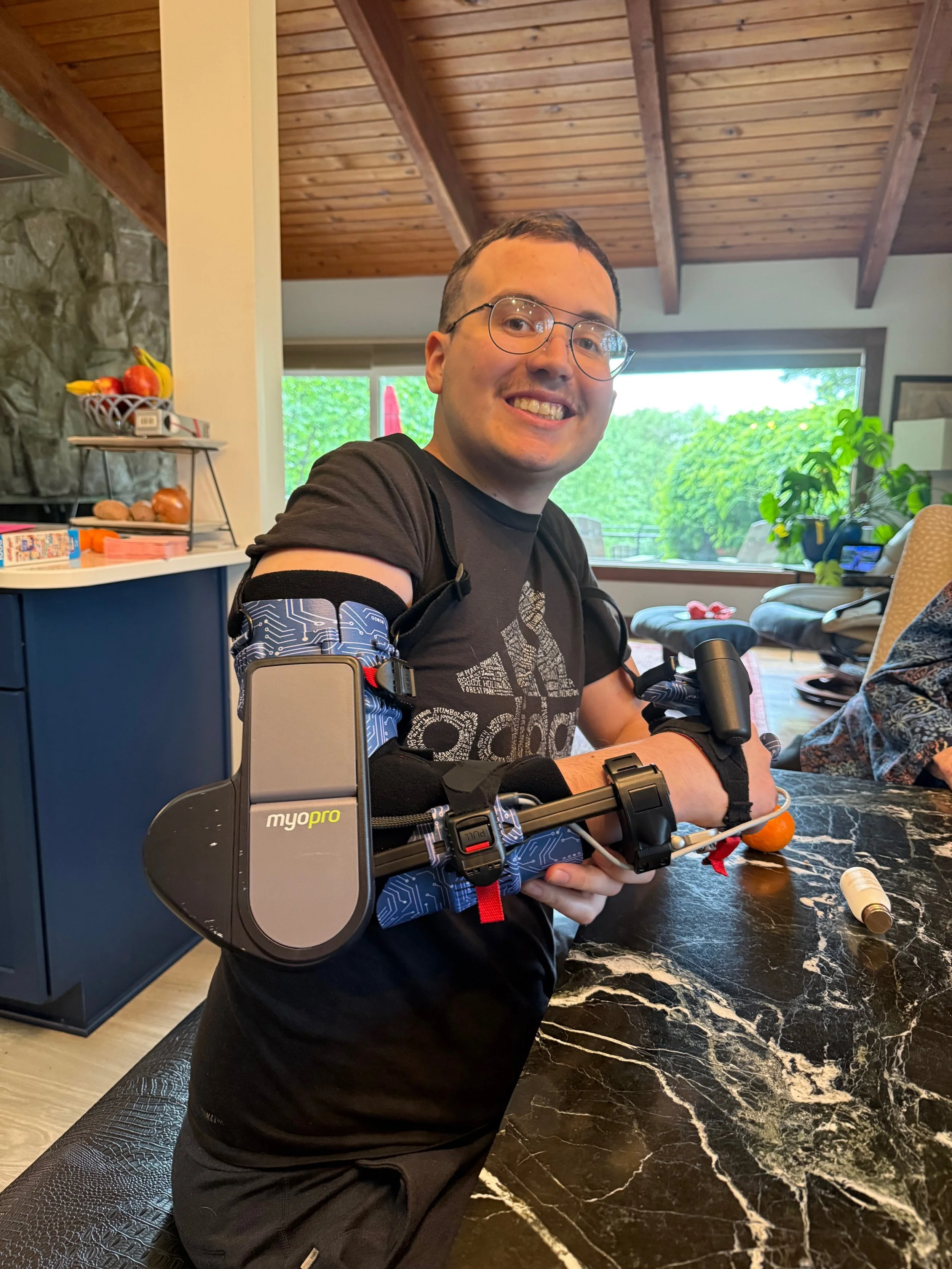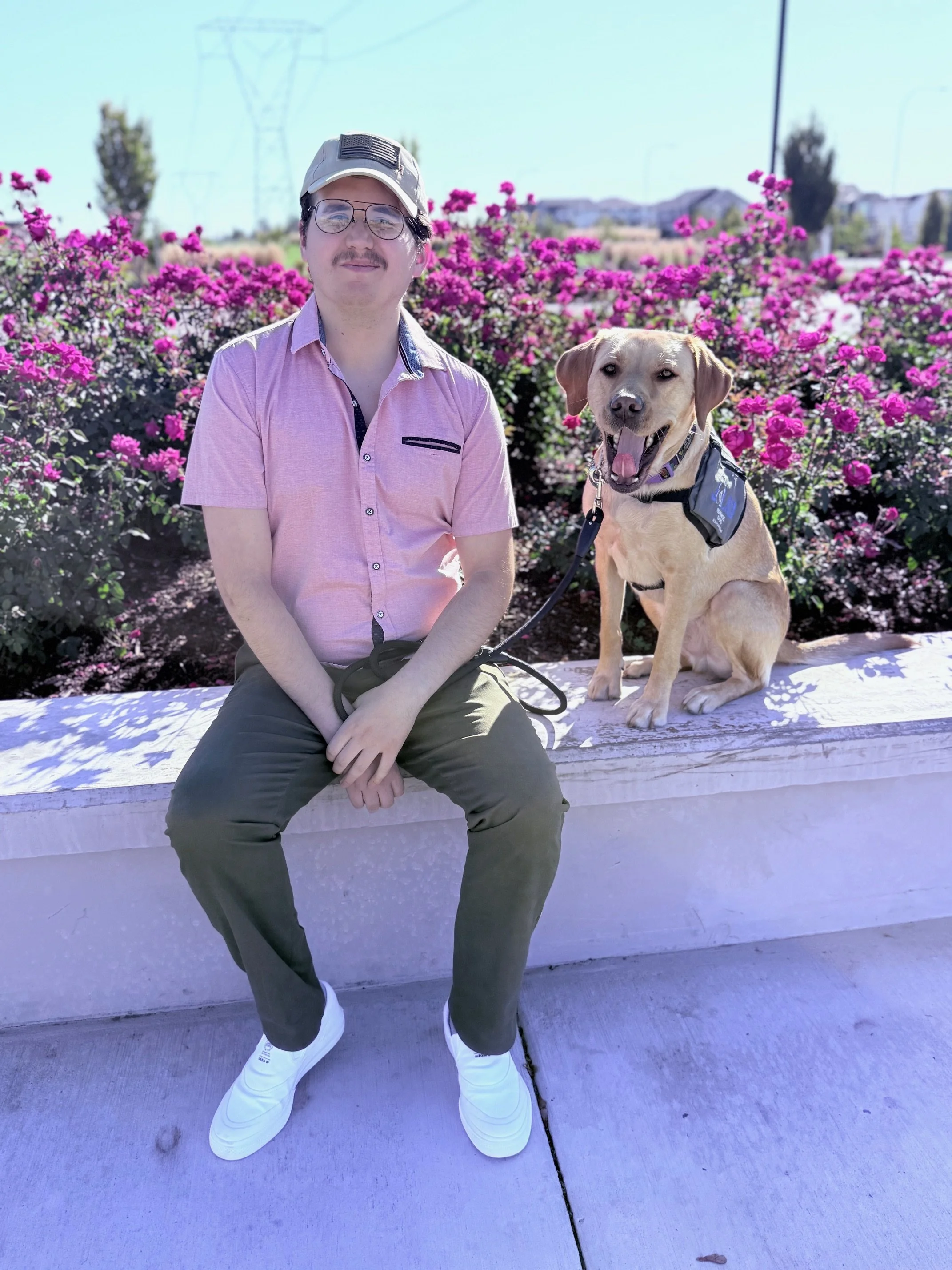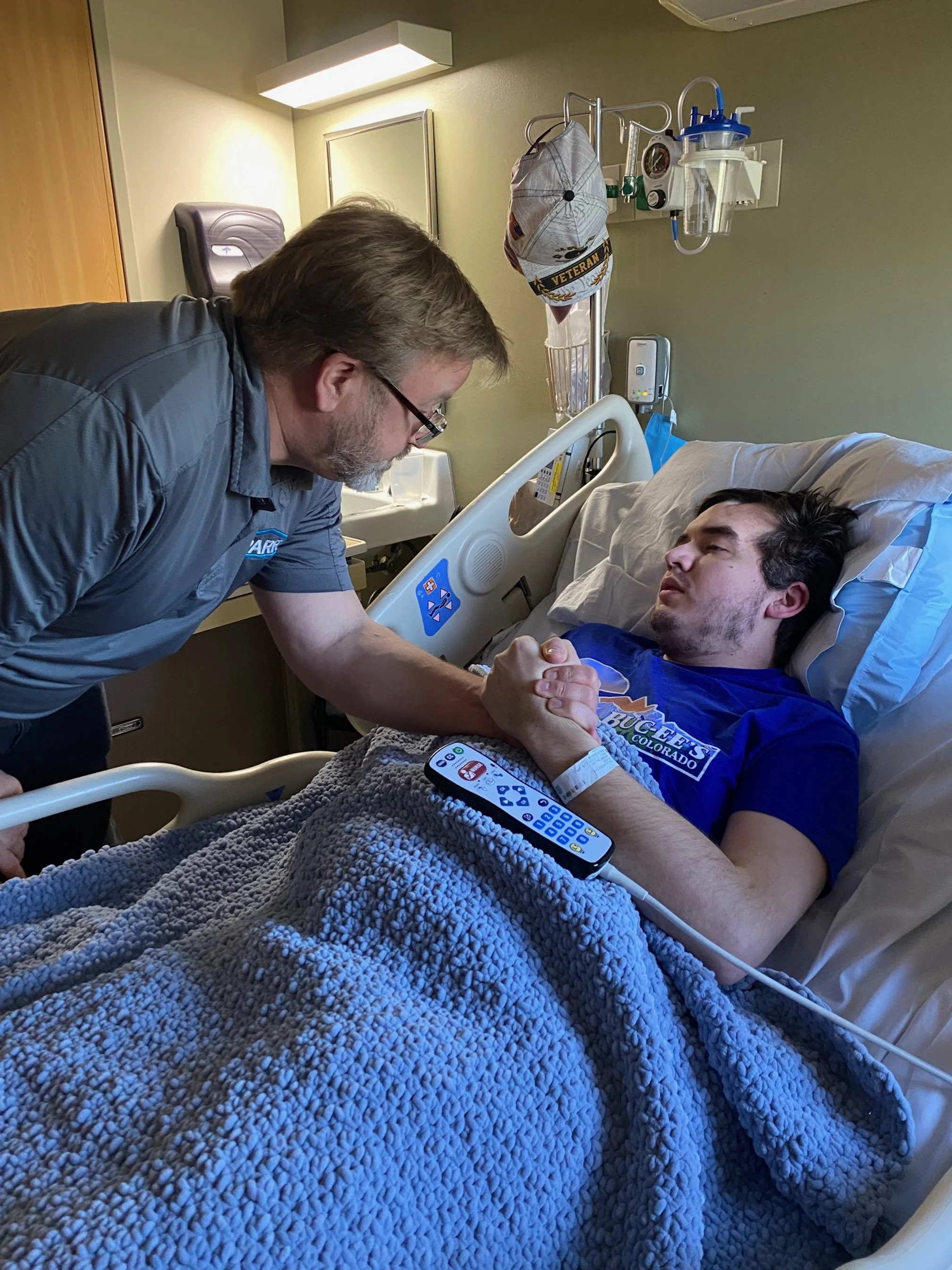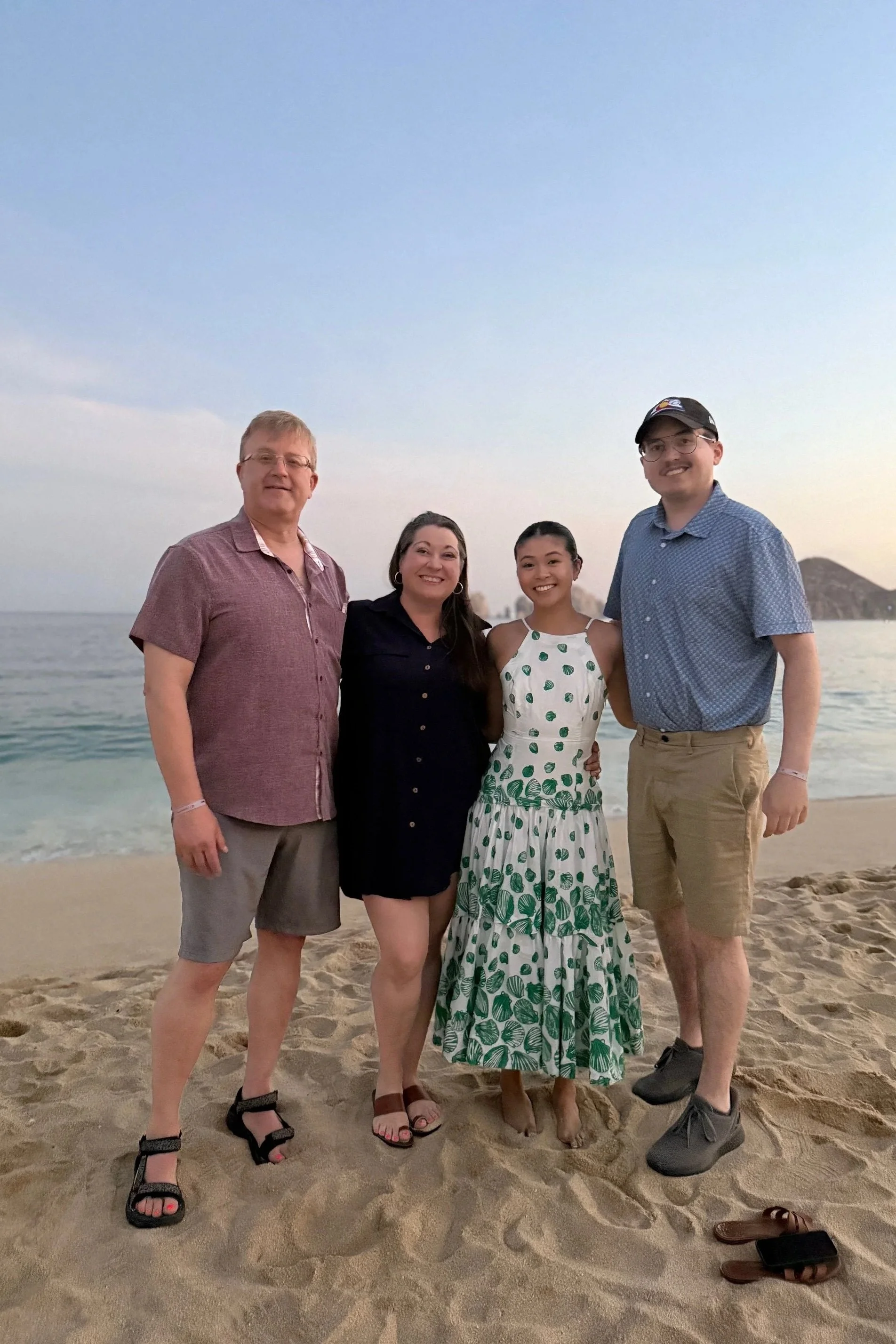Dallas’s Story:
A Fight to Live, A Fight to Heal
On August 15, 2022, my son Dallas was 24 years old. He was serving as an officer in the U.S. Space Force, stationed at Keesler Air Force Base in Biloxi, Mississippi. That morning, he went to the gym to work out like he always did. And then—he collapsed.
He was rushed to the on-base hospital across the street, unconscious and showing signs of a massive brain bleed. Within an hour, he was flown by Coast Guard helicopter to the University of South Alabama Hospital in Mobile. Surgeons there performed an emergency craniectomy to relieve the swelling in his brain and a partial embolism to reduce the bleeding in his left temporal lobe.
By the time my husband and I (along with Dallas’s bio-dad) arrived from Oregon the next morning, he was in a coma. The only sign of life was a faint squeeze from three fingers on his left hand. The doctors told us it was hopeless. They said not to try to save him. But the nurses—those incredible nurses—fought for him. They were our beacon of hope when no one else believed he could survive.
Dallas was completely paralyzed on his right side. He couldn’t see. He couldn’t speak. But he was still in there. I could feel it. I had confidence that he knew he was loved all the way in his bones that somewhere in him there was a will to survive.
One of our best friends, Scott, got us connected with Dr. Jordi Kellogg, a neurosurgeon in Portland, who reviewed Dallas’s scans and immediately told us to move him to a hospital equipped to handle this level of trauma. Within two days, Barrow Neurological Institute in Phoenix—home to Dr. Michael Lawton, one of the best neurosurgeons in the world—agreed to take him.
The problem was getting there. Electrical storms in Alabama, dust storms in Arizona—no LifeFlight could reach us. The military wouldn’t approve the transfer, so we put our house up as collateral. (The military did eventually cover the flight.)
On August 19, Dallas and I boarded a small med jet bound for Arizona. The flight was very rough, and the hospital in Alabama hadn’t given him any pain medication—just Benadryl. Every bump of turbulence felt like torture for him. When we landed, the team at Barrow took one look and got straight to work. His condition was far worse than expected, and we learned the Alabama hospital hadn’t even sent his skull with us.
For three days, the Barrow team studied every scan, every risk, and built contingency plans for every possible complication. On August 22, eight days after the AVM rupture, Dallas went in for surgery. It lasted nearly 10 hours. When it was over, they had removed a golf-ball-sized AVM, a softball-sized blood clot, and clipped three aneurysms. The surgery was an absolute success.
Recovery began the very next day. Dallas was still unconscious most of the time, but we spent hours each day stretching his hands and moving his limbs so his muscles wouldn’t completely atrophy. His 6’1” frame had dropped from a fit 175 pounds to frightening 138. It was like watching my strong, athletic son disappear—but I couldn’t let that be the end of his story.
By mid-September, after weeks of chaos trying to track down his skull, he finally had a cranioplasty. Then—slowly—he started to come back. His speech was broken but growing stronger. His right arm was still silent. His steps were wobbly, but they were steps. The Barrow staff were angels. Care packages poured in, and even the hotel staff surprised me with a clothing drive because I’d come with just a small travel bag. People’s kindness carried us through.
In October, Dallas and I moved to San Antonio for the next stage of rehab. He was still fragile, unable to walk or transfer by himself. It was terrifying. But in a month, he was walking. Talking more clearly. Gaining strength and confidence. I stayed at the Fisher House across from the hospital, and every day I watched him fight harder than I’ve ever seen anyone fight for life.
In November, we finally went home to Biloxi. Twenty of his friends surprised him with a welcome-home party. It was one of the most bitter sweet days of my life.
In January 2023, Dallas was accepted into the VA Polytrauma Recovery Program in Palo Alto, California. There, he stunned the staff with his progress—walking three miles a day, improving his speech, and rebuilding his strength. He graduated that March, standing tall and smiling.
Next came the Intrepid Spirit Center in Florida, focused on mental health and reintegration. It gave him a renewed sense of purpose. By summer, he was thriving. That August, he attended the Air Force Wounded Warrior Camp in Texas, where he competed in adaptive sports and received the “Heart of a Lion” award for his courage, grit, and compassion for others.
His recovery was astonishing. But brain injury recovery isn’t a straight line.
By late 2023, Dallas began having severe back pain and migraines. Over months, we went through every test and scan imaginable. He was misdiagnosed with MS, then leukemia. Nothing made sense. The pain worsened, and by early 2024, he was barely functioning.
That April, his dad, Carl, drove him home to Oregon. We were in the process of getting him medically retired from the Space Force. For a short time, it felt like we might be turning a corner—he had his own apartment just five minutes from us. But then everything unraveled.
On May 3, 2024, he was hospitalized again—disoriented, in unbearable pain. After being given the wrong medication, he suffered a psychotic break. He didn’t know who he was. He didn’t recognize me. For 16 nights, I slept in a chair next to his bed so that when he woke up afraid, he wouldn’t be alone.
Eventually, we learned he had hydrocephalus—fluid building up in his brain. Multiple spinal taps failed, and he was transferred to OHSU for emergency surgery. They placed external drains and even attempted an experimental spinal surgery to biopsy a mass causing his pain. They couldn’t remove it, but somehow the surgery shifted things enough to bring him real relief.
By June, he was moved to the VA in Vancouver, Washington, for more rehab. When we transferred him ourselves (no medical transports were available), he couldn’t even hold his own weight. But slowly he clawed his way back.
By August 2024, he was finally home.
Over the next year, Dallas rebuilt his life—again. He bought a house in March 2025 with his VA loan. Fifteen friends and family members got him completely moved in within one day. Two weeks later, he was fitted with a Myomo robotic exoskeleton arm to help him regain movement in his right arm. In May, he was paired with a JLAD service dog, Irvin, who hasn’t left his side since.
This September, he and Irvin attended a “Love Your Brain” recovery and resilience camp in Colorado, surrounded by others who understand what it means to live with a traumatic brain injury.
And today—he keeps fighting. Every single day.
Dallas has rebuilt his life from the ground up, not just once, but over and over again. His story isn’t polished or easy. It’s painful and raw and full of grit. But it’s also full of light—proof that even in the darkest moments, there’s always something worth holding onto.


